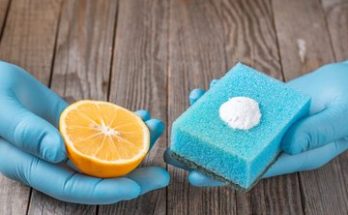Chapter 4 – Acids, Bases and Salts – Short Questions and Answers (Solved Worksheet)
Question- What is the taste characteristic of acids?
- Answer- The taste characteristic of acids is sour.
Question- Where is oxalic acid found?
- Answer- Oxalic acid is found in vegetables like spinach and rhubarb.
Question- What does baking soda taste and feel like?
- Answer- Baking soda tastes bitter and feels soapy.
Question- What is commonly used to identify acids due to their nature?
- Answer– Taste is commonly used to identify acids due to their sour nature.
Question- Name one indicator used to identify whether something is acidic or basic.
- Answer- One indicator used is litmus.
Question- In what everyday substance is acetic acid found?
- Answer- Acetic acid is found in vinegar.
Question- What effect does oxalic acid have in large amounts?
- Answer- In large amounts, oxalic acid can interfere with the absorption of certain nutrients like calcium.
Question- Which acid is responsible for the irritation and pain experienced when an ant bites?
- Answer- Formic acid.
Question- Where is ammonium hydroxide commonly found?
- Answer– Ammonium hydroxide is commonly found in window cleaners.
Question- What is the use of magnesium hydroxide?
- Answer- Magnesium hydroxide is used as an antacid to neutralise stomach acid and relieve indigestion and heartburn.
Question- Which bases are commonly used in the manufacture of soaps and detergents?
- Answer- Sodium hydroxide and potassium hydroxide are commonly used in the manufacture of soaps and detergents.
Question- What colour does litmus paper turn when it comes into contact with an acidic solution?
- Answer- The litmus paper turns red when it comes into contact with an acidic solution.
Question- What is the source of litmus as a natural indicator?
- Answer- Litmus is extracted from lichens.
Question- What colour does blue litmus paper turn in the presence of an acidic substance?
- Answer- Blue litmus paper turns red in the presence of an acidic substance.
Question- What materials are used in the preparation of turmeric indicators?
- Answer- Turmeric powder, water, and blotting paper/filter paper are used in the preparation of turmeric indicators.
Question- What effect does a basic solution have on turmeric paper?
- Answer- A basic solution turns turmeric paper red or brownish-red.
Question- How does turmeric paper react to acidic solutions?
- Answer- Turmeric paper does not show a significant colour change when it comes into contact with acidic solutions.
Question- How is the China Rose indicator prepared?
- Answer- China Rose indicator is prepared by placing China Rose petals in a beaker, adding warm water, and allowing the mixture to sit until the water becomes coloured.
Question- What colour does an acidic solution turn when the China Rose indicator is added?
- Answer– Acidic solutions turn dark pink or magenta when the China Rose indicator is added.
Question- What is the observed colour change when the China Rose indicator is added to a basic solution?
- Answer- When the China Rose indicator is added to a basic solution, it turns green.
Question- Which indicator turns red in the presence of basic solutions?
- Answer- Turmeric Paper.
Question- What colour does China Rose solution turn in the presence of acidic solutions?
- Answer- Dark Pink (Magenta).
Question- What safety precautions should be taken while handling laboratory acids and bases?
- Answer- Handle laboratory acids and bases with care as they are corrosive and can cause harm to the skin.
Question- What colour is phenolphthalein in an acidic solution?
- Answer– Colourless.
Question- What colour does the solution turn when sodium hydroxide is added to the acid-indicator mixture?
- Answer- Pink.
Question- What happens when more hydrochloric acid is added to the pink solution in the neutralisation reaction?
- Answer- It turns back to colourless, indicating an acidic environment again.
Question- What are the end products of neutralisation?
- Answer- Salt and water.
Question- What do you feel when you touch the container during neutralisation?
- Answer- Warmth, because heat evolves during the reaction.
Question- What happens to the acidic nature of the acid and the basic nature of the base during neutralisation?
- Answer- Both the acidic nature of the acid and the basic nature of the base get destroyed, resulting in a mixture that is neither acidic nor basic.
Question- What is consumed to neutralise excess acid in the case of indigestion?
- Answer- An antacid like milk of magnesia, which contains magnesium hydroxide, is consumed to neutralise the excess acid.
Question- How is the irritation and pain from ant bites usually neutralised?
- Answer- By applying a basic solution like baking soda or calamine to neutralise the formic acid released by the ant bite.
Question- What is added to overly acidic soil to neutralise its acidity?
Answer- Quicklime or slaked lime, which are basic substances, are added to neutralise the soil’s acidity.
Also Check – NCERT Exemplar Solutions- Class 7 Science Chapter – 5- Acids, Bases and Salts
Also Check – Rapid Revision – Class 7 Science – Chapter 5-Acids, Bases and Salts
Also Check – Chapter 4- Acids, Bases and Salts-Class 7 Question and Answer (Long)
Also Check – NCERT Solutions For Class 7 Science Chapter 5 – Acids, Bases and Salts
Also Check – Acid Rain – Class 7 -Chapter 5-Acids, Bases and Salts
Also Check – Class 7 science -Chapter 5-Acids, Bases and Salts –
Also Check – Definition and Explanation of Important Keywords
Also Check – Class 7 science -Chapter 5-Acids, Bases and Salts- Complete Notes
Also Check – Chapter 5- Acids, Bases and Salts-Class 7 Question and Answer (MCQ)
Also Check – Chapter 5- Acids, Bases and Salts-Class 7 Question and Answer (Fill in the Blanks)
